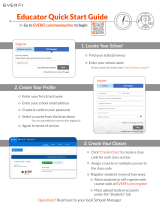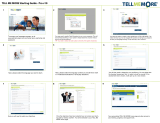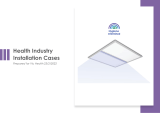in the workplace or academic setting when such conduct creates an unreasonable, intimidating,
and hostile or offensives workplace or academic setting.
5. Introduction To Clinical Medicine
5.1 Overview of Clinical Experiences
ICOM students in years three and four are assigned to core affiliated hospital systems.
Additionally, ICOM has secured affiliations with additional healthcare systems which will
provide additional learning opportunities for ICOM students. Core hospital assignment will take
place during the fall of the second year. Clinical experiences occur within hospital sites for
inpatient experiences, in ambulatory practices, and in geriatric acute care and long-term
facilities. Rotations will occur with contracted, fully accredited faculty members.
The core clerkship clinical rotations are designed to provide the student with an education in the
general areas of behavioral health, emergency medicine, family medicine, internal medicine,
internal medicine-subspecialty, pediatrics, surgery, surgery-subspecialty and women’s health.
All clerkships are under the direct supervision of Idaho College of Osteopathic Medicine
(ICOM). ICOM has affiliations and will continue to engage hospitals, clinics and physicians to
offer diverse training opportunities. The program has been organized to permit the greatest
degree of educational exposure in a practical, clinical environment and to develop expertise in
the area of patient diagnosis and management. The rotations provided at each affiliated site, and
the number of students assigned to each affiliated site from ICOM, are determined by mutual
agreement with the hospital/training site and the ICOM Office of Clinical Affairs. Each core
affiliated site will have a regional assistant dean, a credentialed and contracted ICOM faculty
physician, who provides over-site and guidance to the clinical rotations and student experiences.
The regional assistant dean will monitor the progress and performance of ICOM students and
preceptors during their third and fourth year clinical experiences. ICOM will also provide a
regional clerkship coordinator at each core affiliated site to provide administrative support to
students, preceptors and the regional assistant dean.
Whenever possible, ICOM uses hospitals with accredited postdoctoral programs approved by the
American Osteopathic Association (AOA) and the Accreditation Council for Graduate Medical
Education (ACGME) for postdoctoral training, to provide assurance of adequate teaching
material and faculty.
5.2 Rotation Structure
Minimum requirements for clinical rotations are 32 hours per week for four-week rotations. The
Office of Clinical Affairs will schedule the rotations according to the availability of rotation sites
and numbers of requests. The primary care, medical, and surgical rotations will be completed at
ICOM’s core clinical training sites where ICOM has established rotations, affiliation agreements,
and faculty.
Limited exceptions may be granted. Most rotations will be scheduled on a four-week basis. The
scheduling document accommodates for approved two-week rotations. All paperwork for

























